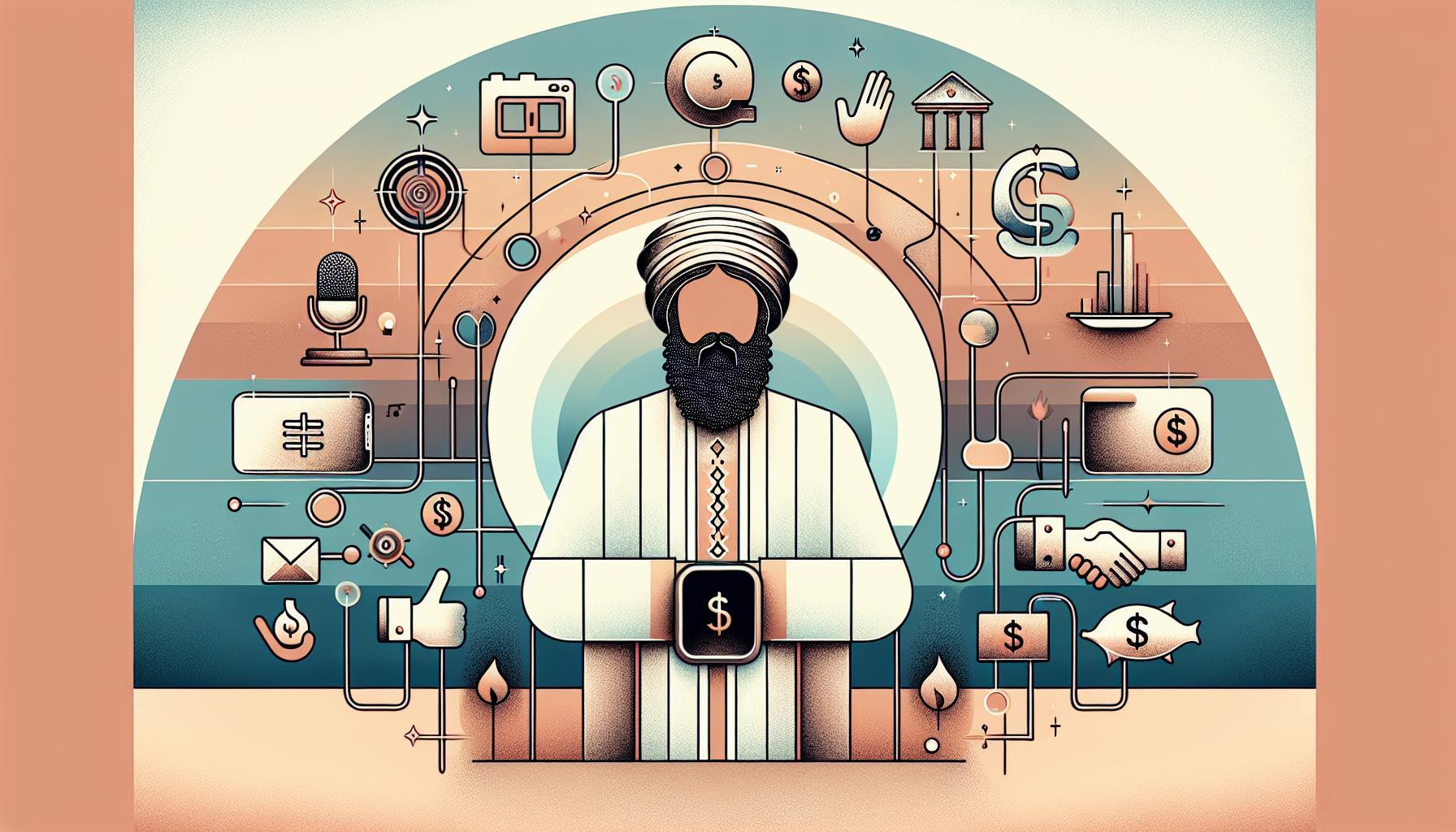Personalization in UX design tailors user experiences to match individual needs and preferences. By leveraging data, machine learning, and analytics, businesses can deliver customized content, recommendations, and interactions that connect with users on a personal level.
Related video from YouTube
Why Personalization Matters
| Benefit | Description |
|---|---|
| Increase user loyalty and retention | Users are more likely to stay engaged with personalized experiences. |
| Boost conversion rates and revenue | Personalized recommendations and tailored journeys lead to higher conversions and revenue. |
| Improve user satisfaction | Users are more satisfied when experiences are tailored to their preferences and needs. |
| Gain a competitive edge | Personalization differentiates businesses, providing a unique and valuable user experience. |
Personalization Approaches
| Approach | Description |
|---|---|
| Rule-based | Sets rules to tailor content and experiences. |
| Recommendation Systems | Suggests relevant content or products based on user data. |
| Predictive | Uses machine learning to predict preferences and tailor experiences. |
| Context-based | Adjusts content based on user location, device, and environment. |
| Adaptive | Creates dynamic content and interfaces that adapt based on user interactions. |
Personalization Tools
| Tool | Description |
|---|---|
| Web Analytics Tools | Track user interactions and gather data on behavior and preferences. |
| CRM Systems | Manage and analyze customer interactions and data for targeted campaigns. |
| Recommendation Engines | Suggest relevant content or products based on user data. |
| Machine Learning Frameworks | Build AI models to analyze data and predict user behavior. |
| Content Management Systems | Manage and deliver personalized content to users. |
Best Practices
| Best Practice | Description |
|---|---|
| User Privacy and Openness | Respect user privacy and be transparent about data usage. |
| User Control | Allow users to customize preferences and opt-out of personalization. |
| Continuous Testing | Regularly test and refine personalization strategies. |
| Consistent Experiences | Maintain a consistent experience across platforms and touchpoints. |
| Data-Driven Improvement | Use data analytics to enhance and optimize personalization efforts. |
Personalization enhances user experiences across various domains, including e-commerce, media and entertainment, social media, and productivity tools. By following best practices and leveraging the right tools, businesses can create tailored experiences that boost user satisfaction, loyalty, and revenue growth.
Understanding User Needs
Grasping user needs is key to personalizing user experiences. It involves gathering and examining user data to spot patterns, preferences, and behaviors. This section explores strategies for collecting and analyzing user data to guide personalization efforts.
Collecting User Data
Gathering user data is the first step in understanding user needs. This can be done through various methods, such as:
- Analytics tools like Google Analytics to track user behavior and interactions on websites or apps.
- Surveys and user testing to get feedback and opinions from users.
- Social media monitoring to follow user conversations and sentiments.
Identifying User Groups
Identifying user groups is crucial for personalization. This involves creating user personas and segmenting users based on attributes, behavior, and preferences. User personas are fictional representations of ideal users, helping to understand their needs, goals, and behaviors.
Analyzing User Behavior
Analyzing user behavior is critical for identifying patterns and preferences. This involves techniques such as:
| Technique | Description |
|---|---|
| User journey mapping | Visualizing the user's experience across multiple touchpoints. |
| Heatmap analysis | Identifying areas of high engagement and interaction. |
| A/B testing | Comparing different versions of a product or feature. |
Personalization Approaches
There are various ways to personalize user experiences. Here are some common approaches:
Rule-based Personalization
This approach involves setting up rules to tailor content and experiences for users. For example, a website might display different content based on a user's location or language preferences.
Rule-based personalization is relatively simple to implement for basic needs. However, it can become complex when dealing with multiple rules and conditions.
Recommendation Systems
These systems use algorithms to analyze user behavior and preferences, then suggest relevant content or products. This approach is commonly used in e-commerce and media streaming services.
There are two main types:
- Collaborative filtering: Analyzes user behavior and preferences to identify patterns and make recommendations.
- Content-based filtering: Analyzes the attributes of items to make recommendations.
Predictive Personalization
This approach uses machine learning and AI to predict user preferences and tailor experiences accordingly. It involves analyzing large amounts of user data to identify patterns and make predictions about user behavior.
Predictive personalization can be used to personalize content, offers, and even entire user interfaces. For example, a website might suggest products based on a user's browsing history and purchase behavior.
Context-based Personalization
This approach adjusts content based on a user's location, device, and environment. For example, a website might display different content based on a user's location or device type.
Context-based personalization can provide users with more relevant and timely experiences. For instance, a weather app might display different content based on a user's location and time of day.
Adaptive Personalization
This approach creates dynamic content and interfaces that adapt based on user interactions. It involves using data about user behavior to adapt content and interfaces in real-time.
Adaptive personalization can be used to personalize content, offers, and entire user interfaces. For example, a website might adjust the layout and content of a page based on a user's scrolling behavior and click patterns.
| Approach | Description |
|---|---|
| Rule-based | Sets rules to tailor content and experiences |
| Recommendation Systems | Suggests relevant content or products based on user data |
| Predictive | Uses machine learning to predict preferences and tailor experiences |
| Context-based | Adjusts content based on user location, device, and environment |
| Adaptive | Creates dynamic content and interfaces that adapt based on user interactions |
sbb-itb-bc761f5
Personalization Tools
Personalization tools help collect and analyze user data, create tailored experiences, and deliver relevant content. Here are some key tools used for personalization in UX design:
Web Analytics Tools
Tools like Google Analytics, Mixpanel, and Adobe Analytics track user interactions and gather data on behavior and preferences. This data helps designers optimize the user experience.
CRM Systems
Customer Relationship Management (CRM) systems like Salesforce and HubSpot manage and analyze customer interactions and data. Integrating CRM with personalization tools enables targeted marketing campaigns, personalized recommendations, and enhanced customer engagement.
Recommendation Engines
Recommendation engines, used by companies like Netflix and Amazon, suggest relevant content or products based on user behavior and preferences. They use machine learning algorithms to analyze data and deliver personalized recommendations.
Machine Learning Frameworks
Frameworks like TensorFlow and PyTorch build and train AI models to analyze large user datasets and predict behavior. These models enable predictive personalization, tailoring experiences to individual users.
Content Management Systems
Content Management Systems (CMS) like WordPress and Drupal manage and deliver personalized content to users. Integrating CMS with personalization tools creates dynamic content that adapts to user behavior and preferences.
| Tool | Description |
|---|---|
| Web Analytics Tools | Track user interactions and gather data on behavior and preferences |
| CRM Systems | Manage and analyze customer interactions and data for targeted campaigns |
| Recommendation Engines | Suggest relevant content or products based on user data |
| Machine Learning Frameworks | Build AI models to analyze data and predict user behavior |
| Content Management Systems | Manage and deliver personalized content to users |
These tools enable companies to create tailored experiences that meet individual user needs and preferences, enhancing engagement, conversions, and business success.
Implementing Personalization
Setting Clear Goals
Before starting personalization, set clear goals and metrics to measure success. Identify key performance indicators (KPIs) like increased engagement, conversion rates, or customer satisfaction. Clear goals will guide the personalization strategy and ensure it aligns with business objectives.
Integrating into Design Process
Involve stakeholders from product, marketing, and IT to integrate personalization into the design process. Collaborate to identify areas where personalization can add value and develop an implementation roadmap. Consider the user journey and pinpoint touchpoints for personalization to enhance the user experience.
Designing User Flows
Create user personas and map their journeys to identify areas for personalization. Design user flows that cater to individual preferences and behaviors, creating tailored experiences that meet specific user needs.
Dynamic Interfaces
Use data and analytics to inform design decisions and create interfaces that change based on user interactions and preferences. This can include features like personalized recommendations, customized content, and adaptive layouts.
Content Delivery
Deliver relevant content to users in real-time using content management systems and recommendation engines. Consider using machine learning algorithms to analyze user behavior and preferences, delivering targeted content.
| Step | Description |
|---|---|
| Setting Clear Goals | Identify KPIs and align personalization with business objectives |
| Integrating into Design Process | Collaborate across departments to develop a personalization roadmap |
| Designing User Flows | Map user journeys and create tailored experiences |
| Dynamic Interfaces | Create interfaces that adapt to user behavior and preferences |
| Content Delivery | Deliver personalized content using recommendation engines and machine learning |
Best Practices
User Privacy and Openness
Respecting user privacy and being transparent about data usage is crucial. Users should understand how their data is collected, stored, and used for personalized experiences. Clear data policies and easy-to-grasp information on data usage build trust and encourage engagement with personalized content.
User Control
Give users control over their personalized experiences. Allow them to customize preferences, opt-out of personalization, or adjust the frequency of personalized content. This respects user autonomy and builds trust, ensuring personalization aligns with their needs and preferences.
Continuous Testing
Regularly test and refine personalization strategies. Monitor user behavior, analyze data, and make adjustments as needed. This ensures personalization remains effective and relevant, and helps identify areas for improvement. Testing and refining optimizes user experiences and drives business results.
Consistent Experiences
Maintain a consistent experience across platforms and touchpoints. Ensure personalized content and experiences are seamlessly integrated across web, mobile, social media, and email. Consistency builds trust and reinforces brand identity, making it easier for users to engage with personalized content.
Data-Driven Improvement
Use data analytics to enhance and optimize personalization efforts. Identify areas for improvement, track user behavior, and measure the effectiveness of personalization strategies. Using data to drive improvement refines personalization approaches, increases user engagement, and drives business results.
| Best Practice | Description |
|---|---|
| User Privacy and Openness | Respect user privacy and be transparent about data usage |
| User Control | Allow users to customize preferences and opt-out of personalization |
| Continuous Testing | Regularly test and refine personalization strategies |
| Consistent Experiences | Maintain a consistent experience across platforms and touchpoints |
| Data-Driven Improvement | Use data analytics to enhance and optimize personalization efforts |
Personalization in UX Domains
Personalization enhances user experiences across various domains, driving business success. Here's how it can be applied:
E-commerce
In e-commerce, personalization improves the shopping experience. By analyzing user data, platforms can:
- Offer personalized product suggestions
- Provide dynamic pricing
- Deliver tailored promotions
For instance, online retailers use algorithms to study purchase history and browsing behavior, suggesting relevant products. This increases conversion chances and fosters brand loyalty.
| Personalization Technique | Benefit |
|---|---|
| Product Recommendations | Higher conversion rates |
| Dynamic Pricing | Optimized revenue |
| Tailored Promotions | Increased customer engagement |
Media and Entertainment
In media and entertainment, personalization tailors content and recommendations to individual users. Streaming services like Netflix and Hulu use algorithms to analyze viewing history and preferences, providing personalized content recommendations. This enhances user engagement and customer retention.
| Personalization Technique | Benefit |
|---|---|
| Content Recommendations | Improved user engagement |
| Personalized Playlists | Higher customer retention |
| Dynamic Content Delivery | Optimized content distribution |
Social Media
In social media, personalization tailors user interactions and content. Platforms use algorithms to analyze behavior and preferences, providing personalized content and recommendations. This increases user engagement and enhances the overall experience.
| Personalization Technique | Benefit |
|---|---|
| Personalized Feed | Improved user engagement |
| Content Recommendations | Higher user retention |
| Dynamic Ads | Optimized advertising revenue |
Productivity Tools
In productivity tools, personalization enhances user experience and efficiency. By leveraging user data, tools can offer personalized workflows, tailored recommendations, and dynamic interfaces. For instance, project management tools use algorithms to analyze behavior and preferences, providing personalized workflow suggestions.
| Personalization Technique | Benefit |
|---|---|
| Personalized Workflows | Increased efficiency |
| Tailored Recommendations | Improved user experience |
| Dynamic Interfaces | Optimized user interaction |
Measuring Personalization
Evaluating personalization efforts is crucial to understand their impact and identify areas for improvement.
Key Metrics
Establish key metrics to measure personalization success, such as:
| Metric | Description |
|---|---|
| Conversion Rate | Percentage of users completing a desired action |
| Engagement | Time on site, pages per session, bounce rate |
| Customer Retention | Percentage of customers retained over time |
| Average Order Value | Average value of customer purchases |
| Customer Satisfaction | Measured through surveys, feedback, and reviews |
A/B Testing
A/B testing compares two or more versions of a webpage, email, or app to determine the most effective personalization approach. By analyzing the performance of each version, businesses can make data-driven decisions.
User Feedback
Gather user feedback through surveys, reviews, and social media to gain insights into preferences and pain points. Incorporate this feedback to refine personalization strategies and create tailored experiences that meet user needs.
Business Impact
Assess the business impact and return on investment (ROI) of personalization efforts by analyzing revenue, customer retention, and other key metrics. This quantifies the value of personalization and informs future initiatives.
Future Trends
As we move ahead, personalization in UX design will keep evolving, shaped by new technologies and changing user expectations. Here, we'll explore the future trends that will reshape the personalization landscape.
AI and Machine Learning
Artificial intelligence (AI) and machine learning (ML) will play a bigger role in shaping personalization's future. With AI-powered algorithms, businesses can analyze vast user data, identifying patterns and preferences to deliver highly tailored experiences. ML will enable designers to create interfaces that learn from user behavior, refining personalization strategies in real-time.
Privacy Matters
As personalization becomes more advanced, privacy concerns will take center stage. Designers must prioritize transparency, ensuring users understand how their data is used and giving them control over personal information. Balancing personalization with privacy will be a delicate task, requiring designers to strike a balance between delivering tailored experiences and respecting user autonomy.
New Technologies
The rise of technologies like augmented reality (AR), virtual reality (VR), and the Internet of Things (IoT) will create new personalization opportunities. By integrating these technologies into their designs, businesses can create immersive, context-aware experiences that blend physical and digital interactions.
Diversity Balance
Finally, as personalization becomes more prevalent, designers must ensure their efforts do not lead to overly homogeneous user experiences. By incorporating diverse perspectives and user feedback, designers can create personalized experiences that cater to individual needs without sacrificing diversity and inclusivity.
Conclusion
In summary, personalizing user experiences is crucial for creating engaging and meaningful interactions. By understanding user needs, leveraging data and analytics, and implementing effective strategies, businesses can boost user satisfaction, loyalty, and revenue growth.
Moving forward, it's vital to balance personalization with privacy. Users should feel valued and respected, with transparency about how their data is collected and used. By following best practices and guidelines, designers and businesses can unlock the full potential of personalization and stay ahead in the competitive digital landscape.
| Best Practice | Description |
|---|---|
| User Privacy | Be transparent about data usage and give users control |
| Continuous Testing | Regularly test and refine personalization strategies |
| Consistent Experiences | Maintain a consistent experience across platforms |
| Data-Driven Improvement | Use data analytics to optimize personalization efforts |



